Business
Different Examples of Good Invention Ideas
There is a wealth of good invention ideas conceptualized by different people everywhere. Some of these people are inventors themselves awaiting an approval of their patent. Others share their good invention ideas as a way of wishing that other inventors out there are will actualize them in the future as discussed on https://www.newsbreak.com/news/1606220763464/how-new-inventors-are-benefitting-from-inventhelp-assistance.
Examples of good invention ideas
The following are examples of good invention ideas shared by ordinary people:
Belt for sports balls
This product is similar to a typical belt except that it has features that allow it to secure golf balls around a golf player’s waist. It eliminates the need to go back and forth to a golf bag or golf cart just to get more golf balls. Should this invention idea be actualized in the future, golf players need not endure the discomfort of placing golf balls in their pocket.
Television goggles
This product is basically a counterpart of the headphones you use to listen to music. The lens of the goggles have television screens inside them that let you watch different television programs. It may be attached to a machine that is similar to a DVD player so that you can also watch movies using your goggles.
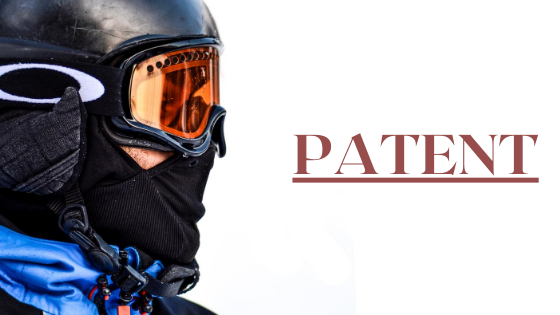
Actualization of good invention ideas
Several good invention ideas in the past fortunately did not remain as mere ideas. Through their inventors’ efforts, they were actualized and made available to the public. The following are examples of these good invention ideas:
Cast cooler
This great invention was created by Krysta Morlan when she was still a college student. Her main inspiration for creating a cast cooler was her firsthand experience in donning a cast that extends from her hips to her ankles.
With the help of her father, Morlan designed the cast cooler by using a machine that consists of a small electric motor, a modified aquarium pump, a plastic tube, and a nine-volt battery. This machine provides cool air to the cast by using the plastic tube as a connection.
Amphibious sandals
Another of the good invention ideas actualized in the past is a pair of amphibious sandals. This special type of footwear is a brainchild of Mark Thatcher. Thatcher’s outdoor water adventures made him realize the need for shoes that are comfortable yet durable enough to be used in water.
In the year 1982, he innovated a pair of typical thongs by designing them with rubber soles and nylon ankle straps. These special sports shoes proved to be so unique and useful that it created a great demand in the market years after the birth of his idea. Find a lot more about inventions and patents from http://theavtimes.com/2020/07/01/amazing-ways-inventhelp-can-assist-you-as-an-inventor/.
Patents and Patenting Process
The patent application process is a very important step to help secure your idea or product. In order to start the process, you must have the specifications and details done properly so that you can move as quickly as possible with the patent application form. There are several steps to be taken when you want to patent an idea or product. Lets get some information about the details of patenting and what you will need to do.
First of all, if you have come up with an idea, the first thing you should do is a patent application search to make sure that idea does not exist at this time. The main purpose of patent searches is to save you time and money if an individual or business has already protected their rights on this idea. When you have come up with an idea to work with, it is always best to make sure it has commercial value. If it does and you feel it can really benefit people, then by all means, start the process as long as no one has dibs on it. In order to do patent searches, you can go online and there are certain websites that can help you with that search. It is always best to use a reputable company for these types of searches as shown in https://www.hometownstation.com/santa-clarita-news/use-inventhelp-to-kick-start-your-career-as-an-inventor-today-335441 article. Most sites will have an about us section so that you can get some background information on them as well.

Once you have done a thorough research on making sure you are the only one with this idea, you will need to decide what category will fit best with your patent. The most common category that people file their idea is under the utility patent. This category can cover inventions, processes, new discoveries, composition of matter, and changes or updates to existing items. You will also find a category called design. You would file your idea under this if it covers any new article for manufacturing. There is also the plant category for people who have discovered a new plant that is a totally new species.
Again, with the application process, you will need specifications of your idea as well as a model to ensure your invention works as what your idea is stating that it will do. There will be an examiner that will thoroughly go over your drawings and everything else that you have submitted. Be sure to give every detail of your invention for better success of your patent to be granted. If you do not have the right information, drawings, specs and everything else when you submit your paperwork, it can be denied for any little thing that may be missing as stated in https://usa.inquirer.net/56347/everything-you-need-to-know-to-be-a-successful-inventor. Regardless, once you have started the patent application process, be prepared to answer questions with the examiner.
Commercial diving industry
The commercial diving industry is chalk full of open positions that are temporary, part-time, full-time, or freelance business opportunities. Check out nearly any online job hot spot or community forum and these listings are overflowing with open occupations that are sure to fit any level of education and specialized training, along with an individual’s work preference. Whether you choose to work offshore or in an inland capacity, commercial diving jobs are available around the world.
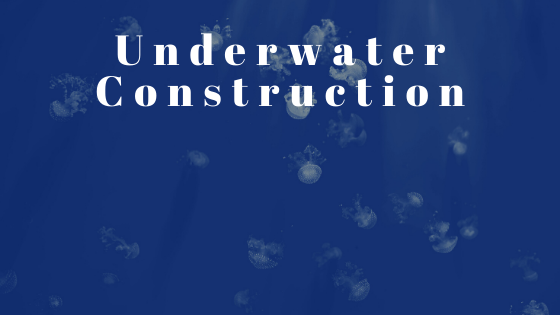
Where Would I Be Working?
Commercial diving jobs are obtainable on any continent – even in the most obscure regions of Antarctica. Depending upon the actual position you accept, you could be working a few miles from your hometown or halfway around the world in Egypt; it all depends on what terms and conditions you are looking for and what your employer’s needs are at the time of your hiring. Assuming you remain stateside, there are mainland and offshore projects.
Typically, mainland commercial diving jobs revolve around lakes, ponds, and rivers. Depending upon the specific environment and job, the diver would be inspecting, repairing, or performing regular maintenance on anything from piers and pilings to riverboats and shipyards and one of the most common jobs are underwater welder jobs as you can see from this Underwater welding process article. Of course there are some diving jobs that aren’t related to sea vessels and related paraphernalia. A commercial diver can also work at nuclear power plants to maintain intakes systems and holding pools. One of the most popular inland diving positions is related to civil engineering; under one of these positions, a diver would be responsible for inspection and repair for above and underwater structures such as bridges, dams, and tunnels.
Factors Regarding Underwater Inspections
There are several different types of equipment, facilities, and various other paraphernalia that are associated with subsea companies and businesses. Oftentimes, these edifices are multi-million dollar investments that require constant upkeep to maintain their integrity and usefulness. These structures all need regular care and inspection if they are to stay functional. Based on this information, and many similar facts, underwater inspections are an integral part of any subaquatic facility.
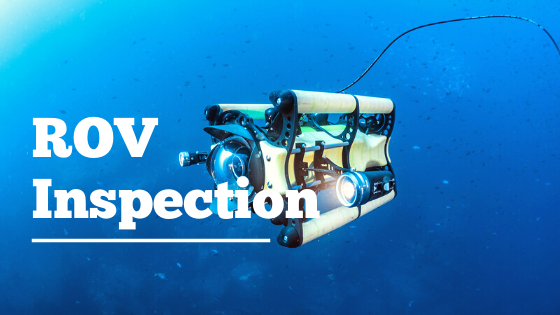
The Need and Importance of Underwater Inspections
Call it an oil platform, offshore platform, or just the standard label of oil rig, but these monstrosities are an excellent example of the complex systems of structures and equipment that must work in harmony within a marine environment. Underwater inspections are beyond necessary to ensure workplace safety and prevent hazardous conditions. You can also check this advice for ROV Inspections.
The guidelines, regulations, and practices used during underwater inspections serve several purposes. First of all, a visual inspection is made to determine how much, if any, surface degradation has occurred. If this is a minimal and only an acceptable amount of deterioration, the examination can continue with a light cleaning or scraping of surfaces. It is important that these areas be contaminant free once various measurements and physical samples are taken. Lastly, underwater inspections ensure not only the safety of the workers and the integrity of the company’s equipment, but also the protection of the marine environment along with the plant and animal species within the surrounding ecosystem.
Overview of 3D Animation Services
Animation is defined as movements that happen simultaneously by showing various frames or pictures. If you have watched cartoons on television, then you have watched a form of animation. When it comes to computers, animation is often used with multimedia presentations. There are a wide range of software applications that will allow users to create animations which can be displayed on a computer monitor. Many people do not realize that there is a difference between video and animation. Video involves motion that is continuous that also breaks up into discrete frames while animation begins with pictures that are independent and adds them together so that it creates an illusion of continuous motion.
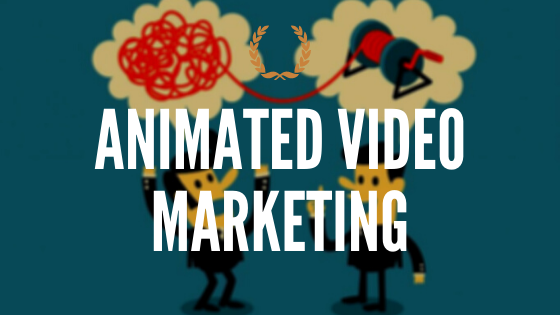
3D Animation Services
The role of animators is to make images that are 2D and 3D and they are created for things such as video games, animated movies, music videos and commercials. They are here to help you with your business animated video marketing ideas. They use computer software, film and video to create images, visual images and social effects. Animators often used popular software such as AutoDesk, Adobe, Ability Photopaint and VectorDesigner.
The Bureau of Labor Statistics show that animators work in a wide array of industries including motion picture and video, technical and trade schools, advertising and public relations, aerospace product and parts manufacturing, computer systems design and specialized design services.
They work in places such as cartoon television networks, gaming companies, advertising agencies, graphic design firms, animation production studios and mobile technology companies.
Inventions are protected by Patents
The patent application contains the following sections:
Description: The description describes the subject of the invention. The text of the specification is written clearly and in detail, by a person skilled in the art to which the subject of the invention relates, to enable the invention to be implemented. The specification covers the following sections.
Invention title: In the beginning of the description, the invention title stated in the application petition is included. Invention title; it briefly describes the invention and does not cover brand quality terms. It preferably consists of 2-7 words.
The technical field to which the invention relates and the state of the art: It determines the technical subject to which the invention relates. In order to study, research and understand the invention both domestic and foreign equivalents are specified and documents that reflect the prior art are preferably mentioned as you can read from https://vocal.media/journal/innovating-as-a-small-business too.
Technical problems that the invention aims to solve: The technical problem solution that the invention solves is clearly understood and indicates the advantages of the invention, if any.
Explanation of the pictures: Short description of each picture is made, the numbers and definitions of the parts in the pictures are explained.
Description of the Invention: In this section, the invention is explained by using the pictures. While explaining the parts and functions of the pictures in the description, the number of each is indicated in parentheses as it is located. In this section, the invention is explained in detail without any doubts and misunderstandings. None of the operation, operation and other technical information of the invention is missing.
The way the invention is applied to the industry: It is stated how the invention can be utilized in the industry, how the invention can be applied and used.
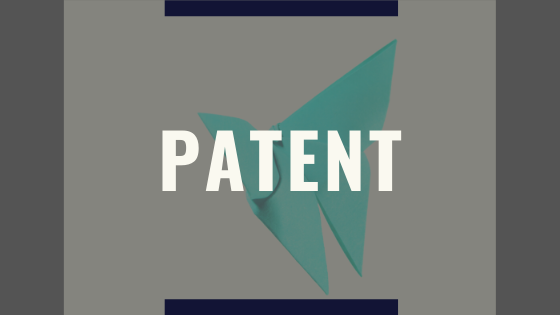
Claims
The claims refer to the features of the invention to be protected by a patent. Every request is written in a clear and concise manner. The basis of the claim or claims is the description. The claims or claims cannot exceed the scope of the invention defined in the specification.
The claims are written in a number to describe the features of the invention in detail. A desired result is not written in the claims.Pictures
Flowcharts and diagrams are considered pictures. Figures, important parts and parts are numbered in the description in the order of description.
Pictures do not contain written parts, a single word or words such as water, steam, open, closed, AB cross section, when exceptional and inevitable; it may also contain a few short words necessary to provide understanding in the case of electrical circuits and block diagrams or flow chart diagrams.
In cases where it is not mandatory in terms of the invention, dimensioning is not made on the pictures. When necessary, it is shown in accordance with the drawing rules.
The pictures are made with fixed, black, dense and dark enough, uniformly thick and well-defined lines and pencil strokes, no color is used. When the pictures are reduced to two thirds, all the details should be seen.
Sections are indicated by oblique sweep, which does not prevent the clearly visible reference marks and baselines. All lines in the pictures are drawn with the help of drawing tools.
The height of the numbers and letters cannot be less than 0.32 cm. In case of letters on the pictures, Latin and Greek alphabets are used in the relevant technical fields.
Reference marks not specified in the specification are not shown in the pictures, and reference marks not shown in the pictures are not included in the specification. You can find more details about it on https://midhudsonnews.com/2020/05/10/how-does-inventhelp-support-new-inventors/.
Summary
Summary serves only the purpose of providing technical information. It becomes less and more concise. It preferably consists of 50 to 100 words.
Attention should be paid to the use of only technical terms, signs and symbols generally accepted in the technology:
Weights and measurement units are expressed in a metric system. If it is expressed in a different system, it is also given in metric system.Temperatures are expressed in degrees Celsius (° C).
Heat, energy, light, sound and magnetism, mathematical formulas and electrical units are specified according to international rules.
Generally used symbols, atomic weights and molecular formulas are used for chemical formulas.
Protect the idea with a patent for your safety
Current legal protection regimes in the field of intellectual property protection do not support the protection of the idea per se, but focus on the intellectual product created on the basis of the idea. This means that an invention, design or design created on the basis of an “idea” can be protected if it meets certain criteria.
There used to be a saying among law enforcement professionals: If someone has a good idea, don’t talk about it, but do it. This means creating something based on the idea, in which the idea is embodied, be it a technical solution or a product, a service, and the intellectual product created in this way will probably be able to be protected by law as shown in https://www.glassdoor.com/Reviews/InventHelp-Reviews-E152162.htm article.
Of course, care must be taken to ensure that legal action is taken in a timely manner, ie before disclosure or contact with other business partners. In this case, it is worth contacting a specialist as soon as possible, with whom the protection strategy can be built up and the appropriate steps can still be taken.

Many concepts are used in public discourse, in the press and in the media, which are misleading and their legal content is inaccurate. Such is the name “world patent,” which is commonly used as if something were protected for the whole world. This intention, the need behind it, is understandable, because indeed many times it would be necessary for something to be protected in many countries, or in all countries of the world, but industrial property rights do not use this concept. Instead, we can talk about legal protection, legal protection that is registered in many countries around the world.
However, these require separate procedures. In connection with these, there are various methods that can be actually applied to the various forms of protection. The term “world patent” is also often confused with the possibilities offered by the PCT international patent application, which is a very advantageous tool for extending rights abroad in relation to patents and utility models. However, a PCT application does not result in a “world patent” as you can read on https://blogs.cornell.edu/react/inventhelp-taking-inventions-from-paper-to-the-global-marketplace-hinges-on-usp/.
The PCT procedure is a preferred way of extending rights in one step, extending rights to all States Parties to the PCT Convention, but registration must then be continued on a country-by-country basis, in national or regional procedures, which then result in final rights.
How Patents Work Today
Many people are confused about how patents work. First of all, one invention may require several patents. Inventions may be a combination of many smaller parts, all of which have to be invented. For example, a light bulb might have several patents–one for the filament, another for the way to carbonize the filament, yet another for the shape of the bulb.
Another patent might show the way to manufacture the bulbs. Of course, that bulb has to fit in a lamp, which gets electric power from a generator somewhere, which passes through wires. All of these parts had to be invented and patented. Also, every time an invention is improved, the inventor must apply for another patent as shown on https://kulturehub.com/inventhelp-support-inventors/.
Also, remember that patents work differently than copyrights or trademarks. A writer can renew a copyright on his book, but most of the time an inventor cannot renew a patent. There are some exceptions, but not many. In Edison’s lifetime, patents lasted 17 years. Today they last 20 years from the time you file for a patent. Afterward, anyone can copy the patent.

Of course, an inventor could also receive a patent for making a major change or improvement on someone else’s invention. Edison received hundreds of patents for things he improved but did not originally invent: the telegraph, telephone, stock ticker and typewriter are just a few examples.
An invention must be “novel,” or unique, to receive a patent. That means inventions must not be described in printed publications before the patent is awarded. This happened to Edison in 1878 when he filed a patent application at the same time in Great Britain and the United States. The British patent was approved first (number 1644).
Unfortunately, the US Patent Office decided that this constituted prior publication and therefore rejected the US patent application. This had devastating consequences for Edison, because it included several important innovations to the phonograph, including the making of disc-shaped records.
Since the US rejected the patent, Edison’s American competitors were allowed to copy it. If Edison had won the US patent, there might still be an Edison recording company today.
Copies of all United States patents can be ordered from the United States Office of Patents and Trademarks. Learn more about patenting from https://twitter.com/inventhelp.
Do you know all about the patent process
A patent lasts for a fixed period of twenty years from the date the application for the patent is initially filed with the US Patent and Trademarks Office (USPTO). However, plants and design patents last for a period of fourteen years from the date of filing the patent application.
It can normally take anywhere between one to three years for obtaining a patent depending upon the complexity of the invention. However, once you have applied for a patent, you can advertise patent pending on your inventions/products and start selling them or making commercial use of them as shown in https://www.techtimes.com/articles/249715/20200518/how-inventhelp-gets-new-inventors-onto-the-right-path.htm article.
The various steps involved in the patent application process?
The various steps involved in the patent application process are as follows:
Patentability search.
Non-Infringement Analysis.
Drafting and filing the patent application with the Patents and Trademarks Office (USPTO).
Office Action by patent examiner.
Publication of Patent.
Grant of Patent by USPTO.A patentability search is a search to establish if the invention which is proposed to be patented has already been patented by someone else.
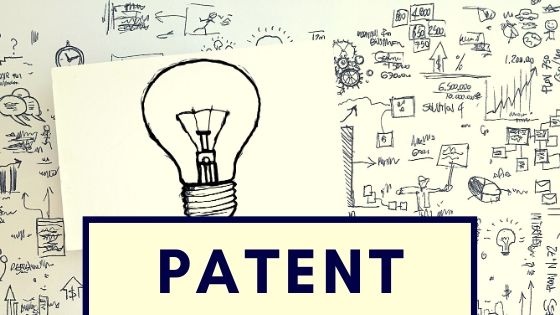
Since novelty is an essential legal requirement for obtaining a patent, performing a patentability search is highly recommended before filing a patent application. A patentability search can save you time and costs of filing a patent application with the trademark and patent office if you discover that your invention has already been patented by someone else.
A U.S. Patent will be enforceable in all jurisdictions where the U.S. law is valid.
Patents are generally valid for the territories where they have been registered. To get a patent registered in a foreign jurisdiction, the routes that are available include the following:
Directly register with the patent office of the foreign country.
Register your patent with a competent authority having jurisdiction over a group of countries, such as, European Patent Office.
Register your patent under WIPO’s Patent co-operation treaty (PCT). The patent filed under PCT will be enforceable in all nations which are party to this international treaty. This patent will be enforceable in all member countries under the World Intellectual Property Organization (WIPO) as you can read from https://www.valuewalk.com/2020/05/medical-invention-covid-19/.
There are mainly two international treaties that give international protection to patents. They are ‘Paris Convention’ and ‘Patent Co-operation Treaty’ (PCT) administered by the World Intellectual Property Organization (WIPO).
Patent Law and USPTO Patent Applications
Patent law is an important but often confusing process for those who are looking to secure the rights of an idea or product. It is important for all inventors to completely understand patent law and the process that helps them to achieve that patent.
What a Patent Does
A patent helps to keep your idea safe, giving you the rights to the concept that you have developed. A successful patent will prevent others from marketing or producing that product. The patent also prevents companies from importing goods into the country that are identical to that patent.
Reach of the Patent
Patents provided in the United States are only enforced in the United States, the United States Territories and United States possessions. People or companies in other countries can use an idea unless it is patented in that specific country. It is also important for inventors to understand that patents in the United States only last for 20 years as seen on https://www.youtube.com/user/inventhelp.

During those 20 years, the owner of the patent must be the one to enforce their rights; the government will not seek out and submit lawsuits against those who infringe on patents unless the patent owner raises the issue.
Types of Patents that Fall Under Patent Law
There are three main types of patents that can be filed under patent law: utility, design and plant patents.
- Utility patents are the most common form of patent, helping to provide rights to those who have invented a “useful” machine, product or process.
- Design patents help to protect more abstract design details or ideas. This helps to protect those who have come up with characters or book/CD/product designs.
- Plant patents help to protect the rights of those who have come up with a new variety or hybrid of a plant.
Patent Application Process
The application is the complex process that must be completed correctly in order to secure the patent.
A provisional patent is a simple form that provides a description of the products, processes and ideas themselves.
Non-provisional patents give a more detailed description of the utility to be patented, including photographic or drawn evidence. This patent must be filled within one year of the provisional patent.
Those who are serious about understanding and filling a patent should work with a legal professional. This will help to ensure that the patent is filed in the correct, legal manner as you can read from https://www.tmcnet.com/topics/articles/2020/03/24/444881-everything-need-know-inventhelp.htm.